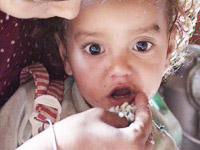Student Academic Integrity
-- UMD Office of Academic Affairs
(Effective: November 22, 2011)
When I taught Advanced Writing for the Social Sciences here at UMD, for over twenty-five years, my rule of thumb advice to students was to plan to spend 60% or more of their time and effort revising drafts (for academic type writing).
In 2001 Wikipedia appeared on the scene and very quickly became a useful tool as a starting point for many academic projects even though as an open-source resource the Wikipedia entries are not checked and verified in the same manner as other traditional reference materials.
Spelling and grammar checkers arrived on the general scene and helped with spelling and grammar checking, but, as you no doubt have discovered, they continue to require human editing.
And, of course, before that we had a selection of excellent Encyclopedia offering good starting points for many projects, the most popular being The Encyclopedia Brittanica.
And long before that there were libraries--since at least the days of Alexandria in Egypt, in the third century B.C.
Today the evolution of research resources and aids continues with the relatively rapid appearance of ChatGPT and other automated content generators.
As many folks have already found out, they can be very useful as starting points, much like their predecessors. But, from the academic point of view, they are still only starting points.
Professors nationwide are for the most part advised, and even encouraged, to experiment with the potentials of ChatGPT and similar apps.
In this class it is fine to experiment, with the caveat that all of your written academic work demonstrates that your personal efforts—including content development and revision—reflect your personal originality, exploration, analysis, explanation, integrating and synthesizing of ideas, organizational skills, evaluation, and overall learning and critical thinking efforts.
That is to say you may experiment with the AI tool to do tasks such as e.g, brainstorming, narrowing topics, writing first drafts, editing text, and the like. AI-generated works should in no case be more than that.
In the end you need to become familiar enough with the various subjects, peoples, and places discussed in this class to research a topic and problem-solve on your own, and carry on an intelligent conversation about them in modern-day society . . . a conversation that goes byond your voicing an unsupported opinion.
Please ask questions of and offer comments to
USEFUL LINKS FOR MORE INFORMATION:
For the record, what follows is the official UMD Academic Integrity Policy. Note that "unless otherwise noted by the faculty
member" this is the default policy.
"UMD’s Academic Integrity policy covers any work done by automated content generators such as ChatGPT or other generative artificial intelligence tools unless otherwise noted by the faculty
member. These tools present new challenges and opportunities."
"Within the confines of this
class The use of AI-content generators is strictly prohibited for any stage of homework/assignment
(e.g., draft or final product). The primary purposes of college are developing your thinking skills,
being creative with ideas, and expanding your understanding on a wide variety of topics. Using
these content generating AI tools thwarts the goal of homework/assignments to provide
students opportunities to achieve these purposes. Please make the most of this time that you
have committed to a college education and learn these skills now, so that you can employ them
throughout your life." -- Jennifer Mencl, UMD Associate Vice Chancellor, Academic Affairs, 10 May 2023
Current information from the UMN Senate Committee on Educational Policy Resources
<https://provost.umn.edu/chatgpt-syllabus-statements>
|
See Also Using Wikipedia and other Standard Reference Works
|





